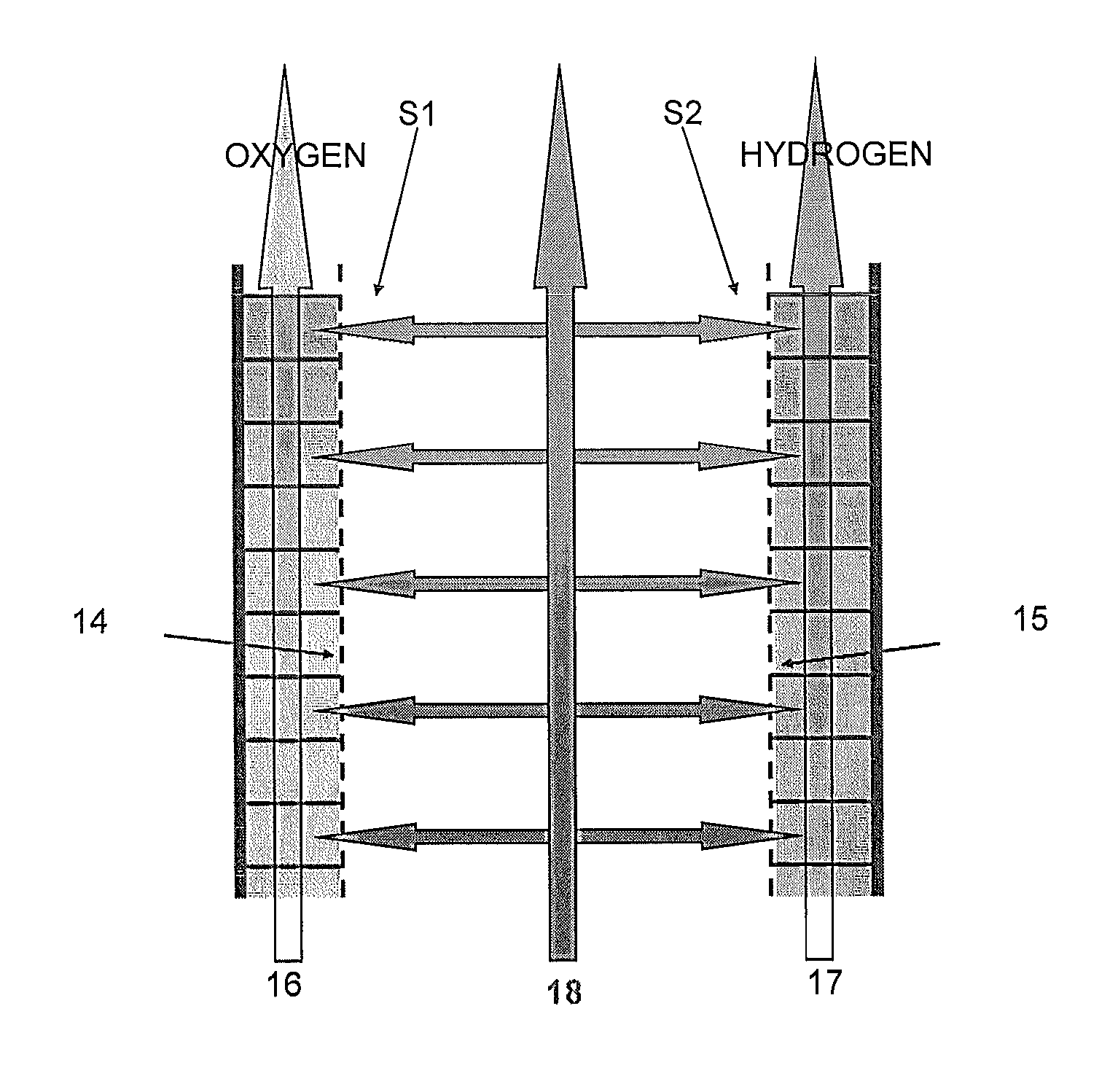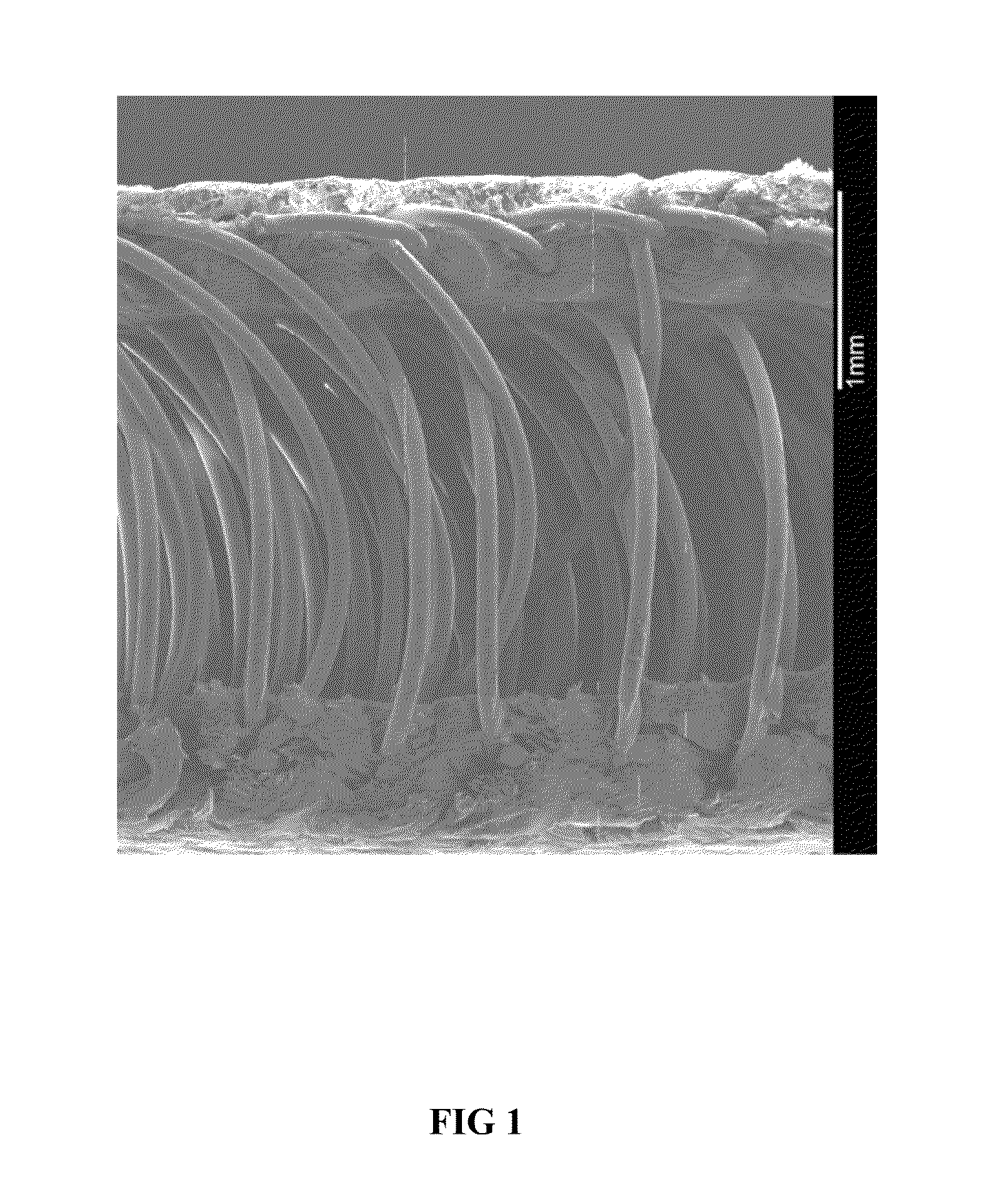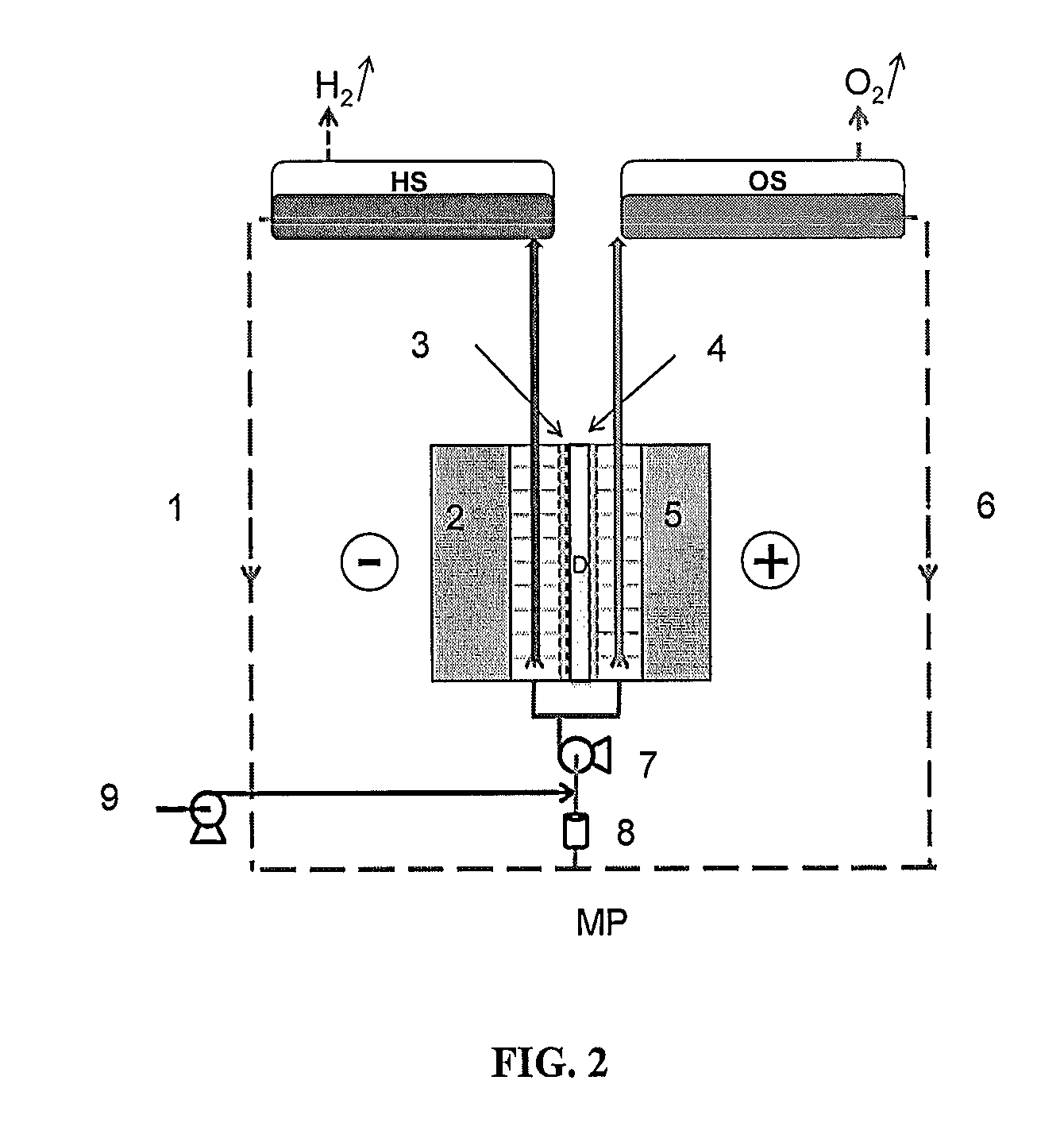Novel separator, an electrochemical cell therewith and use thereof therein
a technology of electrochemical cells and separators, which is applied in the direction of cell components, final product manufacturing, sustainable manufacturing/processing, etc., can solve the problems of inability to provide hydrogen at high pressure, expensive compression steps being always necessary, and limited operation range of electrolysis cells, etc., to achieve constant cell temperature, maintain cell ionic conductivity, and reduce cell voltage
- Summary
- Abstract
- Description
- Claims
- Application Information
AI Technical Summary
Benefits of technology
Problems solved by technology
Method used
Image
Examples
examples
Fabrics Used in the EXAMPLES:
[0208]A FC 0360 / 50 PW ethylene-tetrafluorethylene copolymer (EFTE) fabric from NBC Inc. (Liaison Office Europe, Am Isarkanal 21, D-85464 Neufinsing, Germany), which is a 310 μm thick fabric with a mesh opening of 360 μm and an open area of 50% made from 150 μm thick monofilament EFTE, is used in the Comparative Example.
[0209]A V C PO 471 PPS fabric from Vandenstorme Weaving (De Bruwaan, Oudenaarde, Belgium), which is a 2.0 mm thick woven fabric with two faces each having a thickness of 300 μm and a hollow channel 1.48 mm thick in between with the woven fabric having an open area of 50% and being made with monofilament 100 μm thick PPS, is used in the Invention Example.
Separators Used in the EXAMPLES:
[0210]Two types of separator were used a single layer 550 μm thick reinforced Zirfon® Perl 550 HP single-layer membrane separator produced as described in WO 2009 / 147084A1 by casting a dope containing as solid constituents 85% by weight of zirconia (ZrO2) and...
PUM
| Property | Measurement | Unit |
|---|---|---|
| Temperature | aaaaa | aaaaa |
| Pore size | aaaaa | aaaaa |
| Pressure | aaaaa | aaaaa |
Abstract
Description
Claims
Application Information
 Login to View More
Login to View More - R&D
- Intellectual Property
- Life Sciences
- Materials
- Tech Scout
- Unparalleled Data Quality
- Higher Quality Content
- 60% Fewer Hallucinations
Browse by: Latest US Patents, China's latest patents, Technical Efficacy Thesaurus, Application Domain, Technology Topic, Popular Technical Reports.
© 2025 PatSnap. All rights reserved.Legal|Privacy policy|Modern Slavery Act Transparency Statement|Sitemap|About US| Contact US: help@patsnap.com



